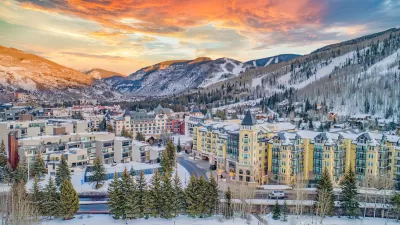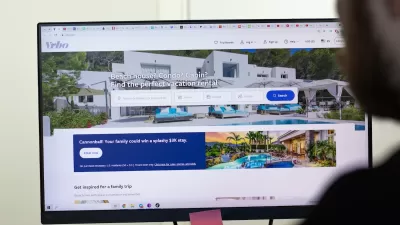The workers that keep many popular tourist destinations running find it more difficult to find affordable housing near their jobs as more remote workers move to scenic resort areas.

In an opinion piece in Governing, Rodney M. Milton Jr. argues that resort towns in states like Colorado “need to get serious” about housing affordability for their residents.
Some are being forced to move away from communities they've known all their lives. Others must live far away from their jobs, commuting through snowy mountain roads or catching a ferry home after a long day of work. The effect on the local economies is dire, with businesses unable to hire or retain staff because there's nowhere affordable for employees to live.
In Steamboat Springs, Colorado, the average home price jumped by 71 percent between 2019 and 2022. “In addition, many vacation communities saw a dramatic increase in units being converted to short-term rentals made available on platforms like Airbnb and Vrbo. Airbnb’s listings outside of big cities increased by almost 50 percent between 2019 and 2022.”
Some citied are taking action. “Vail, for example, developed Vail InDEED, an innovative program that protects and preserves existing homes in the community from conversion to vacation homes through the purchasing of a deed restriction that limits occupancy to local residents.” Private employers are also taking initiative by providing modular workforce housing that can be quickly deployed with seasonal cycles. For Milton, “New housing development can be controversial, but the demand is reaching a breaking point and communities need to accommodate a larger population.”
FULL STORY: Resort Towns Need to Get Serious About Affordable Housing

Planetizen Federal Action Tracker
A weekly monitor of how Trump’s orders and actions are impacting planners and planning in America.

San Francisco's School District Spent $105M To Build Affordable Housing for Teachers — And That's Just the Beginning
SFUSD joins a growing list of school districts using their land holdings to address housing affordability challenges faced by their own employees.

The Tiny, Adorable $7,000 Car Turning Japan Onto EVs
The single seat Mibot charges from a regular plug as quickly as an iPad, and is about half the price of an average EV.

With Protected Lanes, 460% More People Commute by Bike
For those needing more ammo, more data proving what we already knew is here.

In More Metros Than You’d Think, Suburbs are Now More Expensive Than the City
If you're moving to the burbs to save on square footage, data shows you should think again.

The States Losing Rural Delivery Rooms at an Alarming Pace
In some states, as few as 9% of rural hospitals still deliver babies. As a result, rising pre-term births, no adequate pre-term care and "harrowing" close calls are a growing reality.
Urban Design for Planners 1: Software Tools
This six-course series explores essential urban design concepts using open source software and equips planners with the tools they need to participate fully in the urban design process.
Planning for Universal Design
Learn the tools for implementing Universal Design in planning regulations.
Smith Gee Studio
City of Charlotte
City of Camden Redevelopment Agency
City of Astoria
Transportation Research & Education Center (TREC) at Portland State University
US High Speed Rail Association
City of Camden Redevelopment Agency
Municipality of Princeton (NJ)





























